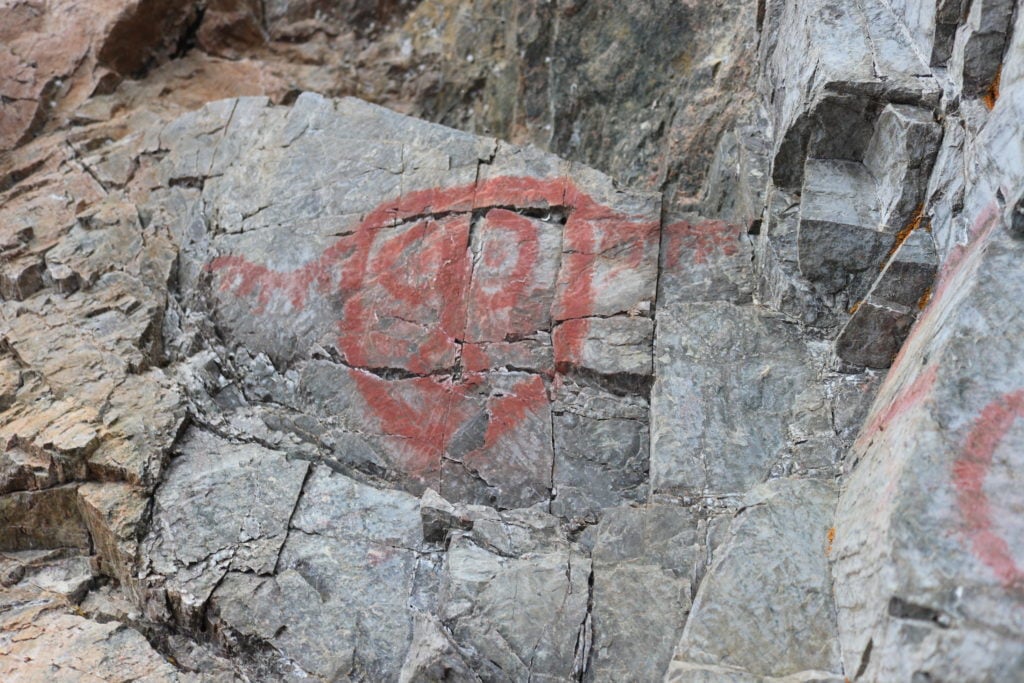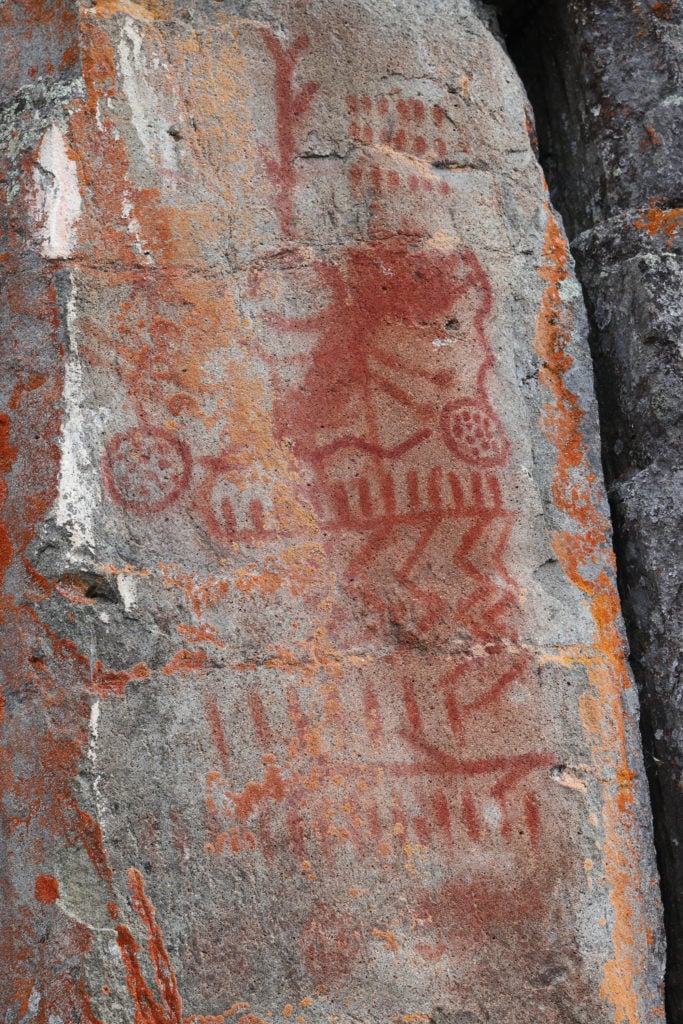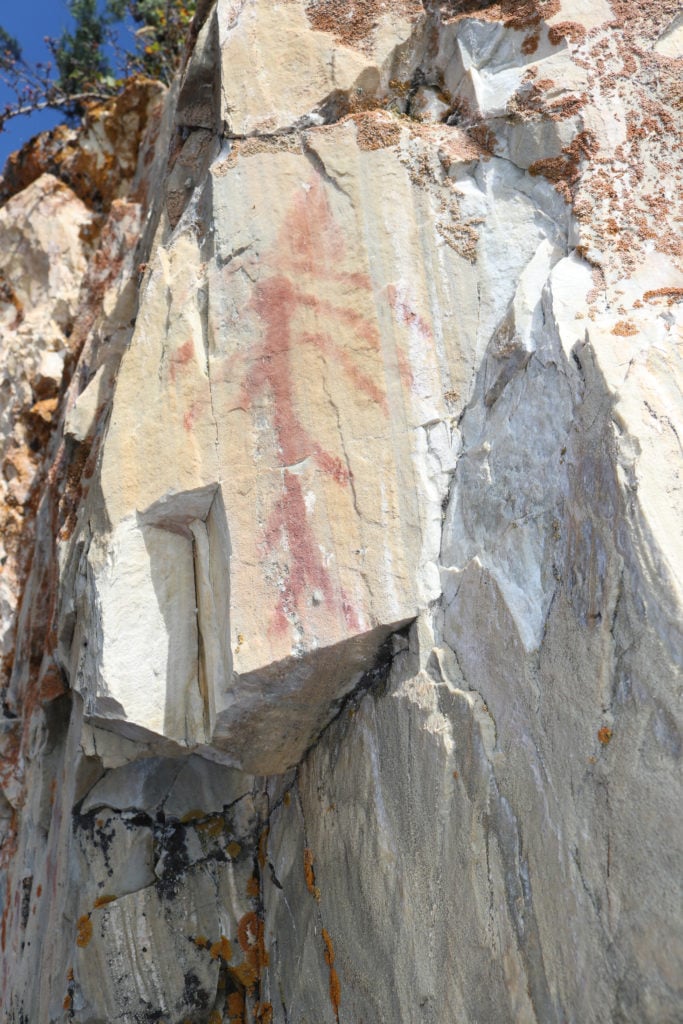Art World
A New Discovery About Prehistoric Rock Art Suggests Ancient People Had Technology We Are Only Now Beginning to Catch Up To
Durable red pigments found at Babine Lake achieved results that put the 21st century to shame.

Durable red pigments found at Babine Lake achieved results that put the 21st century to shame.

Maxwell Williams

The rock art around Babine Lake in the Canadian province of British Columbia positively pops with a startling red hue. It’s hard to believe that the more than 150 rock paintings have remained so well-preserved, in the open air, for thousands of years. It’s also surprising to learn that researchers haven’t studied how the ancient people achieved those red tones, and why the vibrancy has persisted over time.
A team led by Brandi MacDonald, an assistant research professor in the Archaeometry Laboratory at the University of Missouri Research Reactor, has changed that, publishing a study,“Hunter-gatherers harvested and heated microbial biogenic iron oxides to produce rock art pigment,” in the open-access mega-journal Scientific Reports, which is overseen by the scientific journal Nature.

Babine Lake rock painting. Photograph courtesy of Brandi MacDonald.
While MacDonald’s team focused on the late-Holocene Pacific Northwest example of Babine Lake, their work “bears broader relevance for reconstructing key evidence for pyrotechnological innovations and complex cognitive processes,” the study reads.
What does that mean, exactly? Well, it points to the fact that the ancient people of Babine Lake—the artworks haven’t been conclusively dated, but MacDonald puts them at less than 5,000 years old—had figured out a way to harvest a brownish, iron-oxidizing bacteria sediment called Leptothrix ochracea from the lake. They heated the sentiment up over open-hearth fires, reaching temperatures between 750°C to 850°C, transforming the ochre into the vibrant red hue still seen today. MacDonald’s team performed a reconstruction of these ancient techniques by placing a single grain of ochre under an electron microscope and then heating it gradually while observing the effects of the temperature change.

Babine Lake rock painting. Photograph courtesy of Brandi MacDonald.
“Today, engineers are spending a lot of money trying to determine how to produce highly thermo-stable paints for ceramic manufacturing or aerospace engineering without much known success, yet we’ve found that hunter-gatherers had already discovered a successful way to do this long ago,” MacDonald told Mizzou News, the campus newspaper at the University of Missouri.